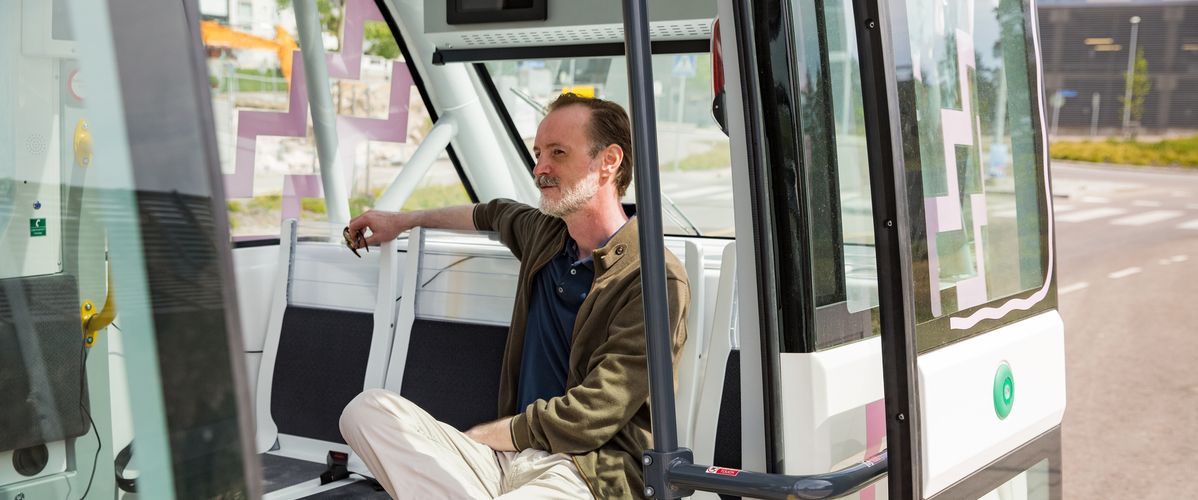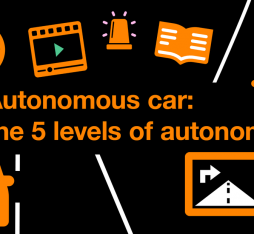• He explains how AVs work, the importance of 5G connectivity and his company's role in improving LiDAR technologies.
• Valeo has recently announced a system to enable AVs to park themselves in car parks, as well as a collaboration with motorway operator APRR to enable them to independently navigate tollgates.
Can you explain the basic functioning of autonomous vehicles?
Autonomous vehicles essentially depend on three classes of components: sensors, processors, and on-board software. At Valeo, we have the widest portfolio of sensors on the market, with cameras, radar modules etc. for level three and upwards, which is the level of automation where drivers can hand over complete control to electronic systems. LiDAR sensors play a key role in these systems. They provide an additional mode of perception by scanning the surrounding environment with lasers to generate highly accurate information on potential obstacles, and because they are active sensors that make use of their own energy to illuminate the road ahead, they are fully functional both during the day and at night. The use of LiDAR has made it possible to match critical levels of safety achieved by systems in the aeronautical industry, with equivalent accident rates.
An end-to-end system that enables autonomous vehicles to take control of all aspects of motorway driving with real-time transmission of dynamic maps of toll plazas
Why is the bandwidth provided by 5G so important for these vehicles?
The 5G network standard brings benefits in terms of quality of service, particularly through network slicing, which guarantees high levels of bandwidth for certain applications. Today’s autonomous vehicles may need to be operated under remote supervision so that human drivers can take control of them under certain circumstances, and they also need to be dynamically updated with, for example, mapping elements. Thus, there are occasions where these vehicles are reliant on high levels of connectivity if they are to function correctly. For example, we are currently working on a collaborative project with the motorway operator APRR (Autoroutes Paris-Rhin-Rhône) on a system to enable AVs to successfully navigate tollgates, which involves the real-time transmission of dynamic maps of toll plazas that take into account hazards like closed lanes and missing road markings etc. The goal of this system is to enable these vehicles to be fully autonomous from the moment they enter the motorway system until they leave it. As it stands, current systems hand back control to drivers whenever they encounter a toll plaza.
You have also developed your own parking assistance system…
We’re working on an autonomous parking system with BMW. It’s a level four system, which means that it can be given total autonomy in a given context, in this case in a car park. It’s an on-board system that allows you to leave your car at the entrance to an airport or supermarket car park, and the car will park itself and later come and pick you up when you need it. And it can manage these tasks independently. Level four systems provide vehicles with a degree of autonomy that fully enables them to cope with specific conditions for which they have been designed. These may be geographical or atmospheric: for example, some systems are designed to work only in motorway traffic jams when the weather is fine etc.
What would you say to consumers who feel that car manufacturers are slow to adopt these new technologies?
Today, we have a sufficient legal framework to regulate the private and public use of autonomous vehicles, that is to say with level-three and level-four autonomy. At the same time, we are seeing the rapid adoption of driving aids: emergency braking assistance, speed limiting systems etc. These technologies, which have resulted from research and innovation in the field of autonomous vehicles, do not replace drivers, but in the event of driver failure or distraction, they do have the capacity to implement safeguards and to take control of vehicles if necessary. In short, today’s drivers are already benefiting from investment in autonomous vehicles that has produced systems that are now in widespread use. And the large-scale deployment of these systems is also reducing the cost of the technological building blocks for self-driving cars so we can look forward to lower prices for level three and four autonomous vehicles in the future.
Can you give us an example?
The first shuttles to make use of LiDAR technology were equipped with laboratory instruments that cost tens of thousands of euros. At Valeo, we have now developed automotive LiDAR sensors that are robust enough to run for more than 100,000 km under normal vibration and temperature conditions at prices that will pave the way for their widespread use. And these technologies are increasingly being deployed in robot taxis and autonomous shuttles, which in the long term will make them more affordable.
Five levels :
The five levels of vehicle autonomy are:
Driving assistance (Level 1). Example: adaptive cruise control.
Partial autonomy (Level 2). Example: parking assistance.
Conditional autonomy (Level 3). Example: driving in traffic jams.
High autonomy (Level 4). Example: autonomous parking.
Full autonomy (Level 5).
 Antoine Lafay
Antoine Lafay











